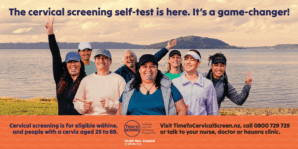Clarifying how flexi-funding and service contracts are used to support general practice, outreach, and equity-focused care.
Recent public statements have suggested that Western Bay of Plenty PHO retains too much flexible funding and that these funds are not reaching frontline care. We want to share the details on how this funding works and how it supports the patients and communities we serve.
For the 2024–2025 financial year, the total flexi-funding we receive is approximately $9 million. Of that, circa 70% is available to general practices, largely through the Care Plus programme, which supports people with high health needs due to chronic conditions, acute medical or mental health needs or terminal illness. This also includes discretionary funding to support high-needs patients, minor skin procedures, and palliative care — flexible funding that practices and aged residential care facilities can use to meet the needs of their enrolled populations.
An additional 15% supports wraparound services that work alongside general practice or serve people outside clinic settings as well as health promotion. These services include, for example, our diabetes specialist team of nurses and dietitians, outreach nursing services for whānau not accessing primary care, Green Prescriptions (which support physical activity), and Te Ahunga Whānau (for people living with long-term conditions). We also fund mobile services such as the HbU, a Ngāi Te Rangi iwi primary care and social work service providing free appointments in under-served areas, and outreach services for remote communities such as Matakana and Mōtītī Islands.
“Not everyone accesses care through a GP alone,” says WBOP PHO Chief Executive Lindsey Webber. “Reducing barriers means offering multiple ways for people to connect with the support they need. That’s why we invest in outreach, mobile, and wraparound services — including our PHO-led services and community providers who deliver programmes that practices might otherwise have to build themselves. These services improve access whilst relieving the pressure on general practice. It’s all part of keeping care fair and accessible for everyone.”
The remaining 15% of flexi-funding contributes to PHO management and system-wide support functions, which include, as examples, clinical governance, health analytics, a dedicated practice liaison team, and support staff for clinical programmes such as acute demand and breast screening. These resources help ensure quality, reduce pressure on practices, and support a connected, responsive health system. We also fund workforce development initiatives, such as the free continuing education events for nurses and GPs or the Registered Nurse Prescribing in Community Health Programme.
Separate Service Contracts
In addition to flexi-funding, WBOP PHO manages over 30 contracts totalling around $22 million, which are entirely separate from capitation and flexi-funding. These contracts support services such as School-Based Health services, employing more than 13 nurses, and the Comprehensive Primary and Community Care Team (CPCT), which includes a pharmacist, paramedic, and physiotherapist.
The Integrated Primary Mental Health and Addictions (IPMHA) programme is another example. It has introduced 19 Health Coaches and 18 Health Improvement Practitioners, based in general practices and working directly with patients. These roles account for most of the staff increases in recent years and are not funded through flexi-funding or linked to back-office functions.
Some on these contracts include small management fees to support coordination and delivery, which remain within or below permitted levels, as confirmed by independent audits. In some cases, where Te Whatu Ora | Health NZ contracts WBOP PHO to manage services using a ‘fee-for-service’ model, practices are paid for each service they provide; in these instances, WBOP PHO passes 100% of this funding directly to the practices.
Capitation funding
Capitation is the primary method through which the government funds general practices. It provides a fixed amount per enrolled patient, adjusted for factors such as age, sex, and Community Services Card status. For instance, practices receive more funding for children, older adults, and women of childbearing age, reflecting their typically higher healthcare needs. While some components of capitation consider ethnicity and socioeconomic deprivation, these adjustments apply only to a limited number of targeted services.
For the 2024/2025 year, WBOP PHO’s capitation funding totals circa $53 million. This entire amount is passed directly to general practices to support the essential care of enrolled patients.
Other sources of income
Other sources of income for WBOP PHO in 2024/2025 include funding for pay disparities and System Level Measures (SLMs). An estimated $1.6 million in pay parity funding is paid directly to practices to help bridge the wage gap between primary care and hospital staff. SLM funding is estimated at $1.1 million. WBOP PHO works with its provider network to set how much funding is passed through to practices and how much is retained to support services such as the Outreach Immunisation Service. A minimum of 60% is directed to providers.
As a non-profit organisation, every dollar we receive is reinvested into health services that support the people of our region. Flexi-funding is designed — and required — to be used for patient care, and that continues to be our focus. We also maintain some reserves for longer-term projects and board-approved commitments to make sure we can respond to the changing health needs of our community.
Clarifying Access to Funding for Aged Care
Third Age Health has suggested in the media that discretionary funding was either unavailable to them or linked to services that did not align with the needs of their patient group. We want to clarify that Third Age Health has access to the same funding mechanisms as all other practices in our network, including discretionary funding. This funding is allocated based on enrolled patient numbers and is specifically intended to support people with higher health needs — such as those in aged residential care, including palliative care. While we maintain regular engagement with Third Age, no concerns have been raised, and we have not placed any restrictions on its use. We also note that they have not consistently claimed the funding available to support the care for their patients.





